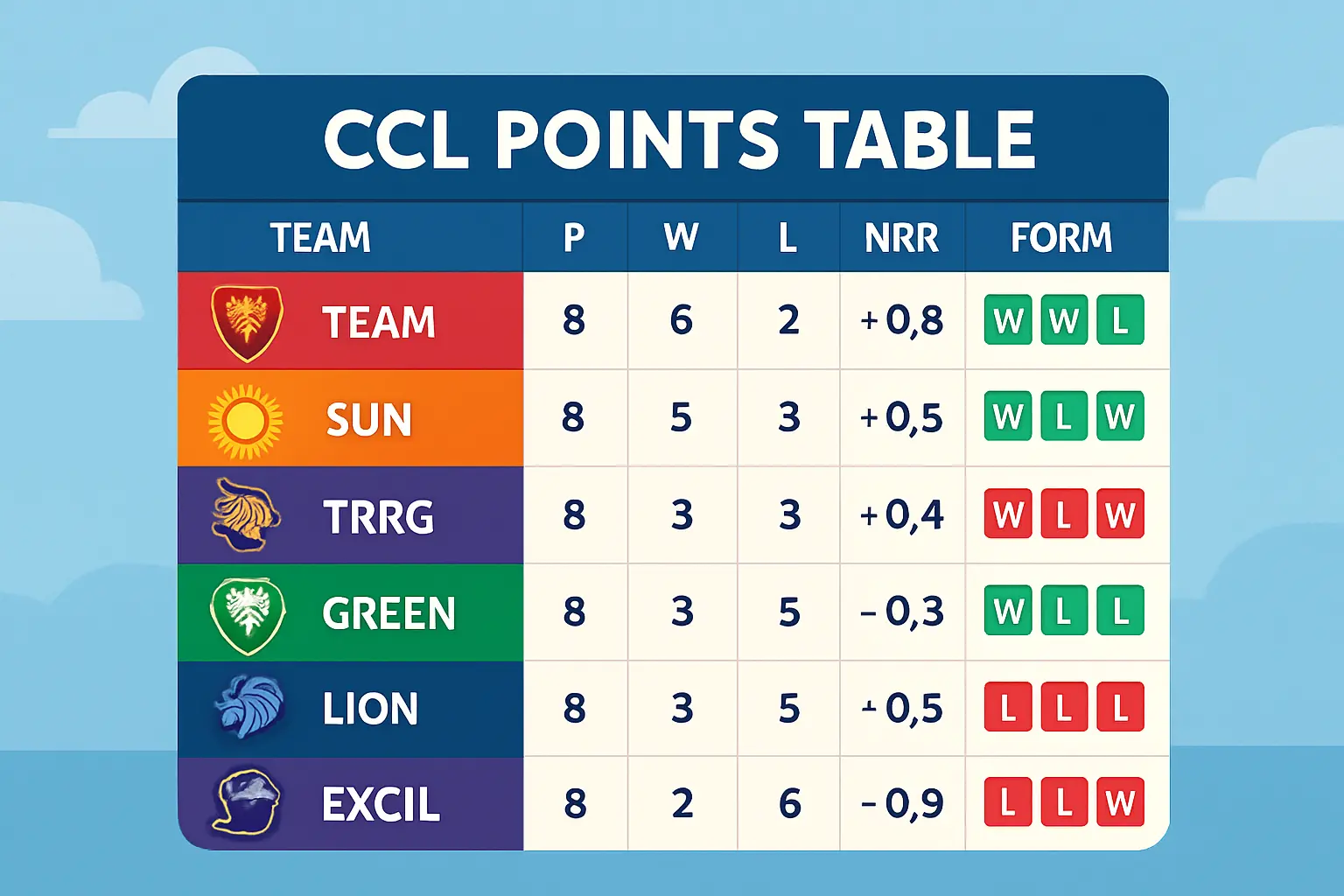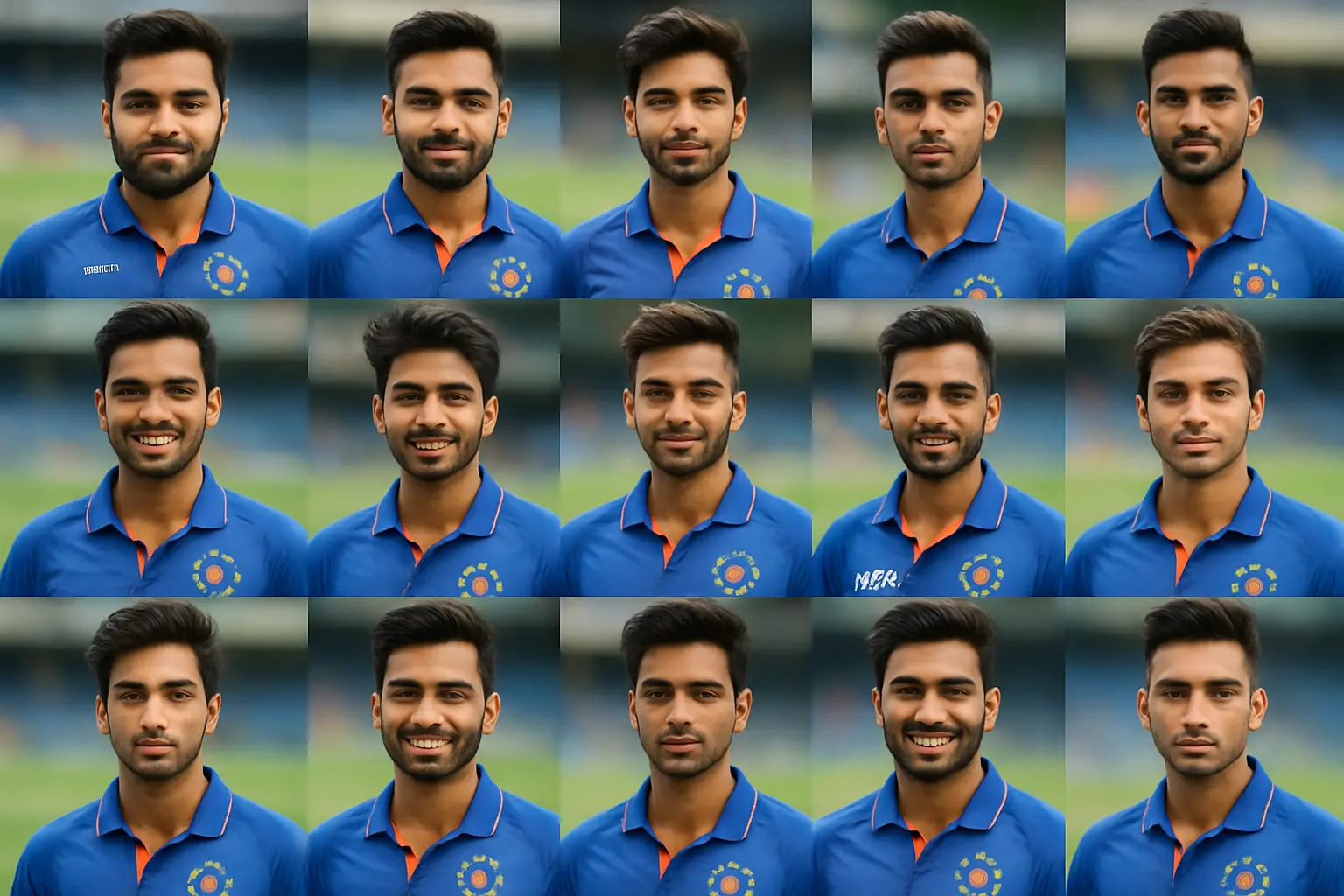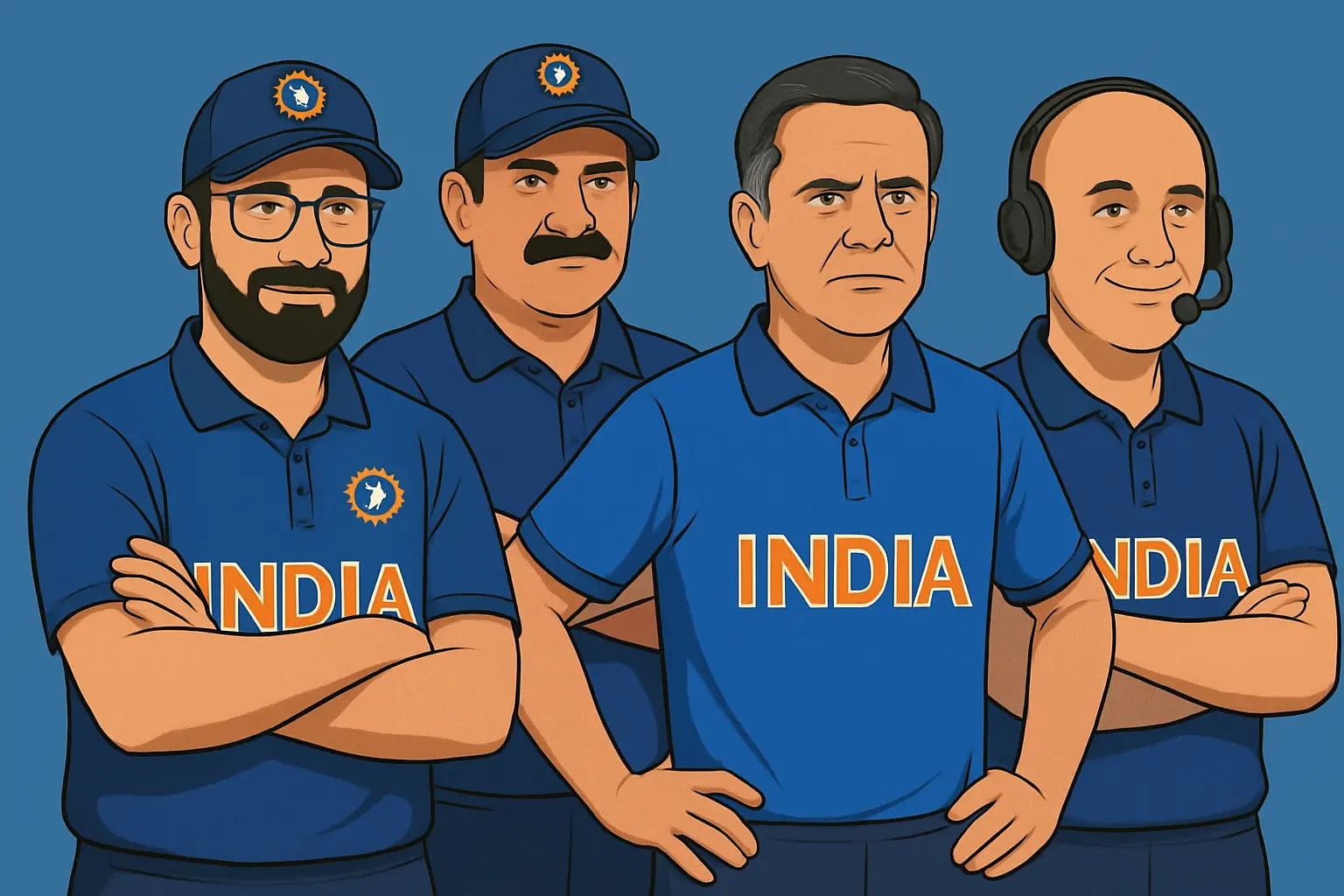A wicket keeper lives in the space between fear and instinct. The ball deviates a fraction, seams away late, climbs off a length; the crowd gasps; the bowler half-turns; and the keeper either turns chaos into a clean take or watches runs leak with a thud off the pads. This is the only role in cricket that never switches off. Every delivery is a job interview, a test of reflexes, posture, patience, and intuition. The great ones don’t simply hold catches; they create dismissals. They read lengths half a frame quicker, sense an angle a beat earlier, and stand up to the stumps in conditions that make most mortals step back.
This guide ranks the best wicket keepers in the world across eras and formats, explains how we judge the craft, highlights the finest women keepers, and goes deep into Tests, ODIs, T20Is and major leagues. It includes the best current keepers, the best keeper-batsmen, and country-wise greats. It folds in on-field nuance—the little things you notice from the rope, in the dressing room, and sitting behind the bowler at training. Records and peaks matter, but so do soft hands, footwork under stress, leg-side takes, and that sixth sense with DRS.
How we rank the best wicket keepers
All rankings in this article are built on a blended view—objective records and nuanced, role-specific context.
Core record indicators
- Dismissals as keeper: catches, stumpings, and dismissals per innings.
- Reliability: conversion of chances, byes conceded relative to conditions, over-by-over consistency.
- Longevity and range: home/away balance, performance across conditions (swing, seam, spin), and execution over full careers.
Contextual metrics and craft
- Standing up to the stumps: agility to spinners, late pick-up on turning tracks, and clean takes on leg-side deviations.
- Pace handling: hands behind quicks and on uneven bounce; ability to ride the ball rather than stab at it.
- Footwork and posture: weight transfer, head stillness, and read on release point.
- Game awareness: field setting cues, gloveman’s leadership, and DRS acumen (keeping the bowling unit honest).
- Pressure performance: tight finishes, fourth-innings heat, white-ball death overs, and knockout games.
Role balance
- Pure glovemen versus keeper-batsmen: both are ranked, but with transparent criteria. If batting creates selection value without eroding glovework in tough conditions, it scores higher.
Sources and data note
- Record highlights reference official ICC data and long-running databases like ESPNcricinfo’s StatsGuru. Specific per-innings rates can vary by record-keeping across eras; where precise figures are inconsistent, the qualitative record and match evidence carry weight.
Top wicket keepers of all time: the all-format, all-era list
These are the keepers who shaped the craft and the scorecards. This is not just a list of the most dismissals; it’s the blend of impact, skill, and balance across formats.
-
Adam Gilchrist
Gilchrist recalibrated what a wicket keeper could mean to a team. With the bat, he changed the speed of Test mornings and the entire geometry of ODI innings. With the gloves, he was all soft hands and economy behind fast bowling at high pace. He made the hardest bits look simple—chasing the ball late, letting it arrive, and riding bounce. His presence meant opponents had to win an extra battle just to keep the keeper quiet. As a complete package—keeping, batting, and presence—he set the gold standard for the modern era.
Signature strengths: Taking at chest height without stabbing, clean leg-side work to high pace, and breaking games open with the bat without dropping the keeping intensity.
-
Mark Boucher
Relentless, spiky, and unsentimental with the craft. Boucher’s volume of Test dismissals sits at the top of the record books, but the more telling memory is the monotone of his work: minimal byes in difficult conditions, positional discipline, and a refusal to be lazy to the quicks. He handled wobble and elevation in South Africa and kept the standards sky high away from home. He also understood angles with slips—tiny adjustments, constant communication.
Signature strengths: Minimal fuss behind seam movement, hard hands only when the ball demanded it, and a captain’s mind without the armband.
-
MS Dhoni
Dhoni is two careers in one: a seismic finisher with the bat and a keeper with surgical hands. His stumpings against spin became a signature—ball scooped with a micro-flourish, bails whipped off in a blink. He bent the calculus of DRS in white-ball cricket; bowlers trusted his read on height and line more than their own. In chases, he rewrote the script; behind the stumps, he shaved risks off overs. His IPL body of work adds another arena where he dominated the conversation as the best wicket keeper in league history.
Signature strengths: Lightning stumpings standing up to spinners, ice-cold DRS calls, and the calmest pair of hands in the death overs.
-
Alan Knott
The connoisseur’s pick. Knott is the prototype of the pure gloveman—sublime footwork, minimal movement after take, and an artist at staying low on English nibble. He lifted seamers and spinners alike with near-perfect basics. The stance was idiosyncratic; the hands were textbook. Go frame by frame and you see zero panic, even when the ball reshaped itself two feet late.
Signature strengths: Softest hands on the moving ball, pristine footwork to leg spin, and the ability to make slip cordons work as one body.
-
Sarah Taylor
If you watched only a few overs, you knew. Taylor’s glovework was world class by any standard: balance in her setup, gliding footwork, and especially leg-side takes that would embarrass many men’s keepers. She made standing up to quality seam look graceful, not risky, and her stumpings had the same electricity you associate with the game’s fastest. In the women’s game, she is the standout for sheer glovework and the model for a generation.
Signature strengths: Leg-side takes to late swing, poise standing up to medium pace, and transfer speed for stumpings that felt inevitable.
-
Ian Healy
Healy changed the vocabulary around keeping to elite spin. With Shane Warne in the middle of the pitch, Healy’s rhythm—how far he stood back, how late he moved, how low he stayed—made leg spin with big deviation feel manageable. Add to that unblinking work to Australian quicks on bouncy surfaces and a batting game that added stubborn runs, and you have a keeper who keeps appearing on shortlists for both skill and influence.
Signature strengths: Reading spin from the hand, staying low on red-soil turners, and commanding traffic with slip and gully.
-
Jeff Dujon
The West Indies’ quicks carved fear into batting line-ups; Dujon bottled that fear with elegance. Keeping to Marshall, Holding, Garner and Ambrose required different starting positions and different instincts from ball to ball. Dujon’s hands didn’t fight the ball; they collected it at trajectory’s end. In a fast-bowling dynasty, he gave them the confidence to hunt the edges and bowl fuller.
Signature strengths: Cushioned takes at high pace, authoritative leg-side collection to late lift, and quiet authority behind thunder.
-
Kumar Sangakkara
As a keeper-batsman, Sanga’s ODI ledger is monumental—miles of dismissals and a mountain of runs. In Tests, he spent time out of the gloves to maximize batting, but when he kept, he did it with authority and leadership. His ODI keeping behind Sri Lankan spinners remains a study in rhythm and timing.
Signature strengths: Standing up to spin with zero fuss, marshalling infield angles, and batting with encyclopedic control while not letting the glovework slip.
-
Ben Foakes
If you close your eyes and picture a manual on glovework, Foakes is the cover. To high spin, to wobble seam, to dead pitch carelessness—he’s balanced and late with the hands, always reading cues earlier than most. His debut in Asia felt like a craft revival: takes that floated into the gloves, stumpings where the ball and the bails seemed to move together. The sample size is smaller than the giants above; the technique is right up there with the best.
Signature strengths: Endless stillness at point of take, delicate hands to spin, and trustable hands in dicey morning sessions.
-
Rashid Latif
One of the finest technicians that Pakistan has produced. Latif made the fiddly bits—inside edges brushing pad, wobbled seam dying at ankle height—look routine. His stumpings had punch, and the stance to seamers was a lesson in staying compact and aligned. With a ball that does strange things in Pakistan, he was a safe house.
Signature strengths: Standing up to cutters and reverse swing, leg-side pickups with minimal rebound, and zero drama.
Best wicket keeper batsmen: the dual-role greats
A keeper who scores runs changes a XI’s architecture. Done well, it frees an extra bowler or a floater batter. Done poorly, it costs byes, missed chances, and DRS chaos. These players got the balance right, adding weight with the bat without letting the gloves slide.
-
Adam Gilchrist
The original tempo-breaker across formats. He could change the narrative of a Test morning in one session or reconstruct an ODI chase from nowhere. The glovework stayed reliable even when the scoreboard said go faster. -
MS Dhoni
The ultimate closer in limited-overs cricket, the captain who understood scoreboard pressure at a molecular level, and the quickest hands to spin. Keeping standards remained high even in the tensest slog overs. -
Kumar Sangakkara
Master craftsman with the bat, measured elegance. As a keeper, particularly in ODIs, he stayed calm and precise behind varied attacks. In Tests, he often put down the gloves to unlock an even bigger batting return. -
Quinton de Kock
Explosive starts and easy bat swing at the top in white-ball cricket, plus strong glovework to seam and left-arm spin. In franchise circuits and internationals alike, he was the dual-threat pick captains prized. -
Jos Buttler
Shotmaking genius, power through the arc, reverse-scoops under lights, and a keeper who reads T20 angles instinctively. He moves with the demands of modern T20, keeping quick without over-committing. -
Brendon McCullum
Before he became the archetype of Bazball, he was a dynamic ODI and T20 keeper-bat. High-octane captaincy, belief in pressure as a tool, and quick hands that backed it up. -
Alec Stewart
Often a batter first, but when asked to keep, he did it with crisp basics. His presence as a top-order bat alongside keeping duties gave England balance in certain series without hemorrhaging chances.
Best wicket keepers in Test cricket
Tests are the craft’s strictest examination. You’re exposed to new-ball wobble, subcontinental dustbowls, and late day-four weirdness. The best Test keepers thrive in both extremes and stay patient in the dull bits.
-
Mark Boucher
The record holder for Test dismissals and the model for discipline. He presented catches to the slips cleanly and denied byes in conditions where many concede. -
Adam Gilchrist
An excellent Test gloveman—calm to pace, balanced to spin—and a batting force that magnified his value. -
Alan Knott
The purest Test glovework across moving English conditions; a master at making tough takes look routine. -
Ian Healy
Integrated with Warne like a relay team. Healy read the hand and length early; takes up the leg-side were a highlight reel. -
Jeff Dujon
Kept the best fast-bowling quartet ever on a leash, with barely a spill to show for it. -
Ben Foakes
Technique and poise on subcontinental turn, plus athletic leg-side takes to seam at home. A minimalist who makes Tests easier for bowlers. -
Wriddhiman Saha
India’s best pure Test gloveman of his generation on the roughest turners. He stood up to Ashwin and Jadeja at times when the ball had mischief in it every other delivery. -
Jack Russell
An artist: eccentric preparation, world-class hands. He collected everything in front and let nothing clang behind.
Record highlights in Tests
- Most dismissals by a wicket keeper in Tests: Mark Boucher sits at the top by a comfortable margin.
- Most stumpings in Tests: Bert Oldfield holds the historical benchmark, a tribute to his lightning work standing up.
- Most catches in a Test match by a keeper: A handful share the joint record. The pattern—relentless seam in helpful conditions with a keeper who misses nothing.
Best ODI wicket keepers
ODIs ask for economy of movement under rotating fields and unrelenting angles. The ball dies on used pitches, then leaps off a green day-night surface. These keepers made it look under control.
-
Kumar Sangakkara
A giant in ODI ledger: massive tally of dismissals as keeper and mountains of runs. Precision behind stumps to spin and seam; never flustered. -
MS Dhoni
The best at reading the game’s tempo late, and his stumpings to white-ball spin created wickets out of nothing. Holds the ODI stumpings high-water mark. -
Adam Gilchrist
A perfect ODI keeper-bat—quick scoring up top, reliable hands behind. The hands stayed soft even with hard new balls. -
Quinton de Kock
Juggernaut starts plus clean glovework. Good to cutters and left-arm orthodox on sticky surfaces. -
Jos Buttler
Versatile: rock-solid to seam under lights, fast on the take standing up to slower options, and a run machine at the death when required. -
Mushfiqur Rahim
Underappreciated volume and reliability; strong positional work to spinners on tacky pitches. -
Moin Khan
Headstrong competitor who stood up to mediums and made seamers’ cutters look safer than they were.
ODI record highlights
- Most dismissals by a wicket keeper in ODIs: Led by Kumar Sangakkara in aggregate.
- Most stumpings in ODIs: Owned by MS Dhoni, the benchmark for transfer speed and clean pick-up.
Best T20 wicket keepers
T20 keeping is a different animal: reverse swing in the powerplay, cutter-heavy slog overs, and near-constant standing up to the stumps. Quick reactions are table stakes; anticipation separates the elite.
-
Jos Buttler
Shape-shifting bat, fast hands, and sharp angles to spinners at mid-overs. Reads scoops and reverse shots well in positioning his fields. -
Mohammad Rizwan
A metronome at the top and a clinical keeper. Quick to leg-side deviations, unflustered in scramble phases. Excellent in PSL and internationals alike. -
Quinton de Kock
Safe, authoritative, and a field general from behind. Combines tall takes to bounce with brisk stumpings to spin. -
MS Dhoni
Even in the sprint of T20, his stumpings looked like sleight of hand. His DRS read—line, dip, bounce—remained a captain’s resource. -
Nicholas Pooran
Fit-for-T20 keeping: explosive movement, one-hand takes, and the range to cover creative batting lines. -
Rishabh Pant
Improved markedly: more compact setup, better lane discipline to leg-side spin. Still an attacking keeper who looks for the chance creation moment. -
Denesh Ramdin
Foundations of early T20 keeping—safe hands on dead pitches and good sprint to the ball in chaos.
T20 record notes
- Most dismissals and stumpings totals fluctuate quickly in this format due to match volume. Dhoni’s stumpings mark in T20 internationals has long been a touchstone; several contemporaries are closing gaps with rising schedules.
Best current wicket keepers in the world
Form ebbs, but technique and decision-making endure. These keepers shape today’s cricket.
-
Ben Foakes
The purest Test gloveman at present. Every series on turning tracks and under cloudy mornings confirms it. The ball looks slower to him than to everyone else. -
Mohammad Rizwan
An elite white-ball keeper-bat who also brings clarity and calm to high-churn phases. Excellent in PSL and international T20s. -
Quinton de Kock
Still a premier white-ball keeper-batsman across global leagues. Brings control behind the stumps even when the surface misbehaves. -
Jos Buttler
A modern captain-keeper who balances the twin loads. His positional tweaks—split second deepening, channel changes—save runs others don’t. -
Rishabh Pant
Sharper, fitter, and increasingly precise. Stands up to spinners with cleaner lines and keeps his hands quiet at take. -
Litton Das
Exceptionally tidy and increasingly influential. Good to both seam and spin, with improved leg-side reads. -
Tom Blundell
Does the fundamentals to a high grade. New Zealand’s quiet achiever with a clean pair of hands and no histrionics. -
Alex Carey
Safe on flat decks, picks wobble well, and efficient with DRS. Underrated leg-side collector.
Best women wicket keepers
The women’s game now boasts a generation that grew up watching and then matching elite glovework. The result is brilliant fundamentals and bold standing-up positions in white-ball cricket.
-
Sarah Taylor
The definitive image of elite women’s glovework: perfect balance, zero panic on leg-sided takes, and lightning stumpings. A keeper who inspired technique upgrades across squads. -
Alyssa Healy
Big-match temperament and clean hands to both pace and spin. Stands up confidently to medium pace and corrects fielding angles instinctively. -
Amy Jones
Ultra-tidy across formats. She moves off the set quickly and keeps the head still as the hands meet the ball. -
Trisha Chetty
Record-heavy career, built on reliability. Good with straight lines under lights and a reassuring presence to new bowlers. -
Richa Ghosh
A rising force: strong wrists, quick release, and increasingly brave positions to spinners. The technique keeps tightening. -
Nigar Sultana
Efficient and courageous in the scramble overs. Keeps it calm when the pitch is two-paced. -
Katey Martin
Classy hands, great communicator. Balanced stance that absorbs late movement.
Best wicket keeper in IPL history (and other leagues)
IPL: MS Dhoni
The face of the league’s wicket keeping. Most dismissals by a wicket keeper in IPL history and a stash of stumpings that rewired middle overs. He built bowling plans from behind the stumps, anticipated angles before spinners hit the crease, and made mid-innings chaos feel inevitable for the batting side.
Chasing the crown: Dinesh Karthik for sheer volume and clutch takes; Wriddhiman Saha for Test-quality hands on flat decks; Rishabh Pant and Quinton de Kock for the modern keeper-bat blueprint. Sanju Samson’s clean takes and leadership have matured into a formidable package.
-
BBL: Matthew Wade has been a constant presence, often doubling leadership with clean glovework. Josh Philippe’s agility and burst illustrate modern T20 keeping. Sam Billings and Jimmy Peirson have delivered high-floor consistency.
-
PSL: Mohammad Rizwan is the league’s keeper template—efficiency, tempo up top with the bat, and smart positioning. Sarfaraz Ahmed adds bite and experience, standing up bravely to medium pace late in innings.
-
CPL: Denesh Ramdin has long been the wicketkeeping spine, with Nicholas Pooran bringing electricity and boundary-to-boundary athleticism.
-
The Hundred and other leagues: Jos Buttler moves between captaincy, opening, and keeping with top-end standards. Phil Salt and John Simpson give teams flexibility with safe hands and power play batting, respectively.
Country-wise best wicket keepers
-
India
- All-time: MS Dhoni. The total package: leadership, finishing with the bat, DRS excellence, and unmatched stumpings.
- Pure Test gloveman: Wriddhiman Saha. Standing up to high-class spin on worn Indian surfaces is an art he treats as a duty.
- Historical foundation: Syed Kirmani, a classical keeper who set the tone for what good technique feels like in Indian conditions.
- Now: Rishabh Pant has pushed his keeping standard to match his batting aura; Ishan Kishan adds white-ball energy; KS Bharat brings steadiness in red-ball.
-
Australia
- All-time: Adam Gilchrist for impact, Ian Healy for glovework legacy, and Rod Marsh as a foundation stone in the era of tall fast bowling.
- Modern precision: Tim Paine lifted the Test glovework bar in his run, especially to seam and on nagging lengths.
-
England
- All-time: Alan Knott for mastery, Jack Russell for artistry. Alec Stewart for dual-role flexibility across formats.
- Modern: Ben Foakes, the best pure gloveman of the current crop; Matt Prior, invaluable runs plus tidy keeping during England’s rise.
-
South Africa
- All-time: Mark Boucher owns the Test mantle. Quinton de Kock changed the white-ball equation and remains a league heavyweight.
-
Sri Lanka
- All-time: Kumar Sangakkara for ODI dominance; Prasanna Jayawardene for purist-approved Test glovework on turning tracks.
-
Pakistan
- All-time: Rashid Latif for technique; Moin Khan for competitive heartbeat. Sarfaraz Ahmed as keeper-captain with strong white-ball credentials.
-
New Zealand
- All-time: Brendon McCullum’s keeper-bat dynamism; BJ Watling’s reliable, hardworking hands in the grittiest Tests.
-
Bangladesh
- All-time: Mushfiqur Rahim’s volume and staying power; Litton Das as the modern standard-bearer with sharp fundamentals.
-
West Indies
- All-time: Jeff Dujon set the gold standard; Denesh Ramdin carried the baton in the white-ball era.
-
Women’s game by country
- England: Sarah Taylor, the exemplar; Amy Jones carries the flame.
- Australia: Alyssa Healy, match-winner and model of modern white-ball keeping.
- India: Anju Jain built early standards; Taniya Bhatia’s glovework set a Test base; Richa Ghosh is the bright present.
- South Africa: Trisha Chetty for longevity and volume.
- New Zealand: Katey Martin’s class stood out in big matches.
Best wicket keepers by era
-
The nineties
Ian Healy, Jack Russell, Alec Stewart, Rashid Latif, Moin Khan, Jeff Dujon’s late-career imprint. It was an era of moving balls, cordon culture, and long hauls behind stubborn quicks and cunning spinners. -
The two-thousands
Adam Gilchrist, Mark Boucher, Kumar Sangakkara, and MS Dhoni redrew the value proposition. Keeper-batsmen became default selections, but the glovework stayed steep. -
The twenty-tens
Dhoni’s DRS genius and ODI stumpings; Quinton de Kock’s opening blueprint; Jos Buttler’s T20 revolution; Ben Foakes’ entrance as a technique paragon. In women’s cricket, Sarah Taylor and Alyssa Healy set new bars. -
The modern moment
Foakes for Tests, Rizwan and Buttler for T20, de Kock across leagues, and a surge of specialized training and data that tunes keeping positions ball-by-ball.
Pure glovemen vs keeper-batsmen
This debate has seasons. The truth: it depends on your attack, your conditions, and your middle order. If you’re playing three quicks and two spinners on turners, your keeper must be faultless standing up to the ball that misbehaves every fifth delivery. If your bowling is relentless and your batting thin, a Gilchrist or Dhoni unlocks a team structure impossible otherwise.
- Pure glovemen are irreplaceable when the ball’s shape is uncertain: knobbly pitches, dusk in seam-friendly venues, or on day-three turners. Their edge is invisible on flat roads but decisive when a session explodes.
- Keeper-batsmen change tournaments. ODI and T20 campaigns are built on the bonus runs they generate without handing back runs and chances behind. The best of them—Gilchrist, Dhoni, Sangakkara—did both jobs at near-elite levels.
The techniques that separate the greats
Footwork
- Micro-steps over lunges. Great keepers never get caught flat-footed because their soles are alive. They adjust on the last two frames of the ball’s approach, keeping the head over the take line.
Head and hands
- Still head, late hands. The hands arrive with the ball, not at it. The best keepers absorb energy. If the ball hits the gloves, it’s a mistake; the ball should be received.
Standing up to the stumps
- Start narrower than you think; give yourself room to chase leg-side drift. Catch with fingers pointing down, palms slightly open, wrists unlocked. Stumpings happen when feet and hands move together—transfer the weight as the bail comes off.
Leg-side takes to pace
- Trust the line you set at release. Don’t chase the wide line too early—ride it with the body and give the hands extra time. This is where byes are saved.
DRS acumen
- Keepers read deviation, bounce, and height from the best seat in the house. The elite ones log patterns: how a leg spinner’s wrong’un lifts, how a left-armer’s angle skids. They’re often right because they watch everything and remember.
Wicket keeping drills that actually work
- Box step and plant: one-step micro-movements into set, over and over, to train last-moment stability.
- Tennis-ball leg-side snaps: underarm flicks on a leg-stump line with late deviation to ingrain soft hands and late reaction.
- Spin shadowing: stand up to a spinner in the nets with old balls, focus on reading from the hand and holding posture, not the take.
- Reaction lattice: a coach calls line and length cues as the ball leaves the hand; the keeper pre-moves to train anticipatory processing.
- Byes discipline: structured sessions where a single bye counts as a heavy penalty in a minimal-runs scenario. It builds competitive stinginess.
Stat glossary and known benchmarks
- Most dismissals by a wicket keeper in Tests: Mark Boucher owns the all-time peak.
- Most dismissals by a wicket keeper in ODIs: Kumar Sangakkara sits at the summit.
- Most stumpings in ODIs: MS Dhoni leads, a testament to hand speed and reading of length.
- T20I stumpings benchmark: Dhoni’s tally has long been the headline figure; current leaders in modern schedules are in the chase.
-
Fastest stumping
There is no universally recognized official “fastest stumping” record by time. Viral clips often cite fractions of a second without standardized measurement. The meaningful takeaway is transfer speed—clean gather and immediate bail-break—with Dhoni and Sarah Taylor serving as quintessential examples. -
Least byes conceded
Context matters hugely: pitch life, attack type, and match duration. Byes per innings is the fairer measure, and the greats keep that number low in the worst conditions.
Best wicket keepers on turning tracks
- Wriddhiman Saha: India’s rough turners are a different game; his low body position and minimal glove rebound stand out.
- Ben Foakes: Balance and soft hands make even sharp leg breaks feel manageable.
- Sarah Taylor: A masterclass in standing up to medium pace that grips.
- Ian Healy: World-class reads to good leg spin, the bellwether of the craft in that scenario.
- Kumar Sangakkara: Economy of movement on dusty ODI decks.
Best wicket keepers under lights and in seam
- Mark Boucher: Skim and late movement never looked frightening on his watch.
- Jeff Dujon: Took lift at chest height with a shrug.
- Alex Carey: Very efficient under white lights, lines up well early.
- Litton Das: Compact setup and good lines early in the evening.
Best wicket keeper captains
-
MS Dhoni
The greatest tactical wicket keeper captain in limited-overs cricket. He turned angles into wickets and time into a weapon. His control of DRS and his read of batter habits were near-uncanny. -
Kumar Sangakkara
Grace with the bat, clarity with fields, and consistent choices behind the stumps. -
Sarfaraz Ahmed
Combative and decisive, he modeled the keeper-captain archetype in Pakistan’s white-ball surges. -
Jos Buttler
A modern white-ball leader who manages permutations in real time while keeping standards high.
People ask, we answer
Who is the No 1 wicket keeper in the world?
There isn’t a single universal answer, because “No 1” leans on what you value. All-time, Adam Gilchrist offers the best complete package of keeping and batting, with Mark Boucher the Test dismissals king and MS Dhoni the white-ball and IPL titan whose stumpings and DRS set him apart. Among pure glovemen, Alan Knott in history and Ben Foakes today represent the highest technical grade.
Who is the best wicket keeper batsman?
Adam Gilchrist sits at the head of the table for long-term impact across formats. MS Dhoni is the greatest finisher-keeper combination and the smartest white-ball mind behind the stumps. Kumar Sangakkara’s ODI ledger is immense, while Quinton de Kock and Jos Buttler are the standard-bearers in the modern white-ball game.
Who has the most dismissals as a wicket keeper in Tests?
Mark Boucher leads the all-time chart. His aggregate and per-innings steadiness define the record.
Who has the most stumpings in ODIs and T20Is?
MS Dhoni holds the ODI stumpings record. In T20Is, he has long been the stumpings benchmark; active players with dense schedules continue to close in on the top marks.
Who is the best wicket keeper in IPL history?
MS Dhoni, on both dismissals and decisive stumpings, and for the intangible value of system control—bowling plans, field changes, and pressure management from behind the stumps.
Is MS Dhoni the best wicket keeper?
If your definition includes leadership, DRS mastery, game-winning stumpings, and limited-overs finishing, he is very hard to top. If you isolate pure Test glovework, Alan Knott, Ben Foakes, Ian Healy, and Mark Boucher make a compelling counter. Greatness depends on the lens; Dhoni is on any credible shortlist.
Who is the best women wicket keeper?
Sarah Taylor is widely regarded as the finest glovework technician the women’s game has seen, with Alyssa Healy the modern symbol of excellence in big matches across formats.
A short, pragmatic ranking by format and focus
All-time, all-format (blend of glovework, batting, impact)
- Adam Gilchrist
- Mark Boucher
- MS Dhoni
- Alan Knott
- Sarah Taylor
- Ian Healy
- Jeff Dujon
- Kumar Sangakkara
- Ben Foakes
- Rashid Latif
Best wicket keepers in Test cricket (glovework-first)
- Mark Boucher
- Alan Knott
- Ian Healy
- Ben Foakes
- Jeff Dujon
- Jack Russell
- Wriddhiman Saha
- Adam Gilchrist
Best ODI wicket keepers
- Kumar Sangakkara
- MS Dhoni
- Adam Gilchrist
- Quinton de Kock
- Jos Buttler
- Mushfiqur Rahim
Best T20 wicket keepers
- Jos Buttler
- Mohammad Rizwan
- Quinton de Kock
- MS Dhoni
- Nicholas Pooran
- Rishabh Pant
Best women wicket keepers
- Sarah Taylor
- Alyssa Healy
- Amy Jones
- Trisha Chetty
- Richa Ghosh
Why they rank: tactical snapshots
- Gilchrist: He kept simple and hit hard. That combination is rarer than it sounds. Watch him to Brett Lee on bouncy decks—hands never snatch, body never collapses.
- Boucher: The reason bowlers felt braver aiming full and at the stumps was because anything edged was collected, and leg-side misses didn’t leak.
- Dhoni: The flick-stumping off leg spin looks like magic; it’s repetition and core strength. He starts a fraction narrower, sets his weight forward, and treats the gather and the bail-break as one movement.
- Knott: Tape lessons in economy. He always arrived with the ball, rarely before it, never after it. That discipline is the keeper’s true superpower.
- Sarah Taylor: Highlights show dazzle; watch the quiet overs. She tracks every delivery with the same intensity, a metronome of good posture.
- Healy: See the partnership with Warne as a study in trust and spacing. He made difficult lengths look orthodox to keep to.
- Dujon: To those remembering thunderbolts, the skill was not getting pushed back by pace. He met the ball in front of the body with cushion, not resistance.
- Sangakkara: White-ball mastermind. Late takes on turning decks are why he could stand up to spinners without losing balance.
- Foakes: He never chases. He lets the ball hit the glove pocket he’s already put on the ball’s path. That’s a different art than merely being quick.
Condition-specific excellence: where keepers win matches
-
Turning tracks
Timing the rise from squat is everything. Foakes and Saha keep the hip hinge and spine angle intact as the ball dips. That’s why their takes look quiet while others bobble. -
Nip and wobble
Boucher’s hands wait, then travel through the ball. The difference between a held catch and a clang is a split-second of patience and not trying to “snatch” the seam. -
Under lights white-ball
The ball skids. Good keepers shift start lines slightly leg-side for cutters and keep wrists unlocked to absorb skids.
The IPL moments that explain greatness
- Dhoni and the mid-over trap: Spinner brought on, fine leg comes up, leg-slip goes in, and the batter thinks nudge; stumpings arrive because the bat lifts an inch and the hands are already moving.
- Karthik and the one-handers: Those aren’t “reaction catches” so much as training responses. He’s pre-set with a looser wrist on the outside glove for high-pace deviation.
The women’s cricket shift
In the past decade, dedicated keeping coaches and specific leg-side reaction drills for women’s squads have skyrocketed standards. Players like Taylor and Healy weren’t just great on broadcast; they were the anchor points in nets, showing younger keepers the difference between quick and tidy. That’s why you see more standing-up to medium pace, more brave positions early in ODIs, and a spike in stumpings that didn’t exist a generation ago.
How to watch keepers like an expert
- Leg-side leaves tell you everything. If a keeper’s body goes with the ball rather than the hands chasing it, you’re looking at polished technique.
- Glove noise matters. Loud thuds are energy fights; quiet meets are energy control.
- Missed byes are a pitch report. One bye on a minefield may be a masterclass; three byes on a road hint at a bad day.
- DRS calls are a keeper’s report card. The best call based on patterns, not hope.
A compact table for reference: all-time top keepers and signature calling cards
| Name | Primary Strength | Signature Calling Card | Record Highlight |
|---|---|---|---|
| Adam Gilchrist | Balance of elite bat + safe glovework | Receiving high pace without stabbing | Monumental all-format impact |
| Mark Boucher | Relentless reliability | Seam and wobble neutralized | Test dismissals leader |
| MS Dhoni | Lightning stumpings, DRS | One-motion gather and bail | ODI/T20I stumpings benchmark; IPL king |
| Alan Knott | Pure technique | Soft hands, low setup | Purist’s top pick in moving conditions |
| Sarah Taylor | Leg-side mastery | Standing up to medium pace | Best women keeper glovework standard |
| Ian Healy | Spin reading | Partnership with Warne | Template for keeping to leg spin |
| Jeff Dujon | Pace elegance | Cushioning high bounce | Fast-bowling era anchor |
| Kumar Sangakkara | ODI command | Standing up to spin with calm | ODI dismissals and runs mountain |
| Ben Foakes | Micro-movement discipline | Makes hard takes quiet | Modern Test technique benchmark |
| Rashid Latif | Technical tidiness | No-drama leg-side takes | Pakistan’s glovework high bar |
Key comparisons fans love to argue, settled with nuance
Adam Gilchrist vs MS Dhoni
- With the bat: Gilchrist accelerated Tests and ODIs in ways that demoralized teams early. Dhoni finished games and captained probability like a mathematician. Different superpowers; equally decisive.
- With the gloves: Both were excellent. Gilchrist’s hands at pace were textbook; Dhoni’s standing-up work and DRS were the new frontier. You pick based on format and squad.
Ben Foakes vs Wriddhiman Saha (pure Test keeping)
- Foakes has the flash-free purity—everything compact, minimal spill. Saha has the subcontinental veteran muscle memory—reading pitch mischief like a language. You can make a case either way; what a luxury to watch them both.
Sarah Taylor vs Alyssa Healy
- Taylor for quiet perfection, Healy for big-stage authority and all-format excellence. Both have changed how young keepers train.
Editorial callouts you won’t see in spreadsheets
- A keeper’s best save is sometimes a shrug. When a ball hits cracks and spits, a thigh deflection into glove looks lucky. It’s not; it’s the knee angle and wrist flexibility trained into muscle memory.
- The best keepers over-communicate early in spells and under-communicate when bowlers are locked in. Dhoni, Boucher, and Healy have this rhythm—short, precise cues beat constant chatter.
- Watching slips shift based on a keeper’s pre-move is a sign of trust. When the keeper twitches half a step right before release and second slip mirrors it, you’re seeing a unit that believes the same picture.
Frequently seen myths, corrected
- “Fastest stumping” is not an official, consistently measured record. What matters is the repeatable process: set base, gather clean, remove bail without a second thought.
- Catches define keepers. Not entirely. Stopping byes on bad days and enabling slips to stay wider because they trust you—those are two runs saved here, three runs saved there, ten runs over a session. That’s match equity.
Conclusion: the quiet edge that wins series
When you pick the best wicket keepers, you are not merely counting dismissals. You are choosing the heartbeat of your bowling unit, your first fielder at slip height, and your second captain. The great ones—Gilchrist, Boucher, Dhoni, Knott, Taylor—changed how teams felt about a day’s work. Bowlers pushed lengths because they trusted the catch. Spinners tossed it higher because they trusted the gather. Field settings grew braver because the keeper saw patterns and gave courage a plan.
In Tests, the best keepers make tough sessions bearable; in ODIs and T20Is, they turn half-chances into wickets and plug the leaky holes that decide finals. In leagues like the IPL, the best wicket keeper becomes the system itself—calling angles, predicting swings in momentum, and acting before the batter realizes a trap has been set.
Pick your favorite from the lists above and you pick a philosophy. Do you want the purity of Foakes and Knott, the endurance of Boucher, the controlled violence of Gilchrist, the clairvoyance of Dhoni, or the technical poetry of Sarah Taylor? Any path can win you games. The game is kinder to those who choose a keeper first and build a team around the gloveman’s calm. That’s the quiet truth behind almost every great bowling performance you’ve ever loved.











